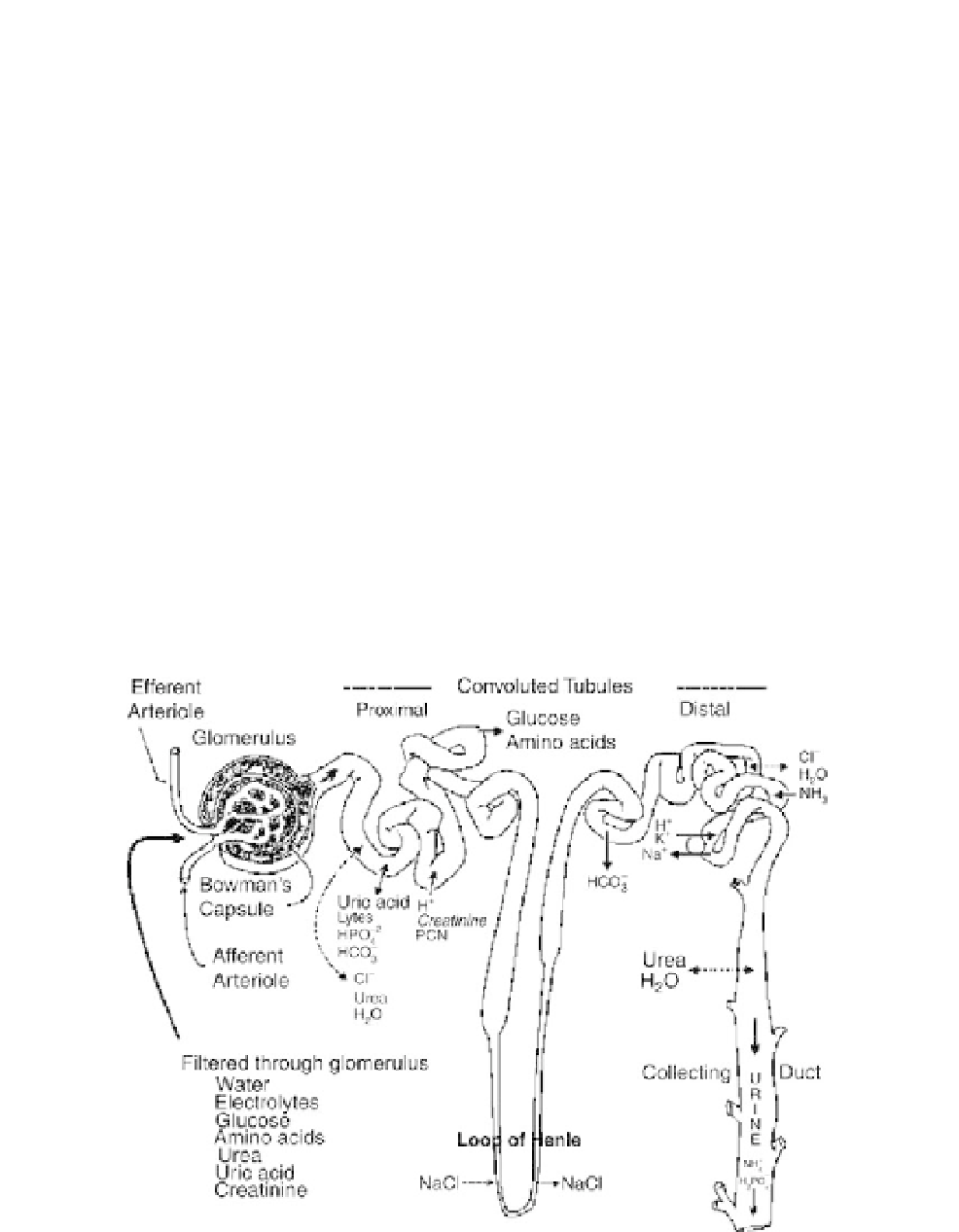Biomedical Engineering Reference
In-Depth Information
The remainder of the nephron includes the proximal tubule, the loop of Henle, the distal
tubule, and finally the collecting duct, where urine is formed and collected. At each seg-
ment of the nephron, water and ions are removed from the tubules to be reabsorbed into
the bloodstream. The end result is more concentrated filtrate culminating in urine. Blood
hormones control the amount of ions and water that are reabsorbed into the bloodstream,
which results in more or less dilute urine. A more detailed description of mass transfer of
ions and water from the tubules of the nephron is shown in Figure 14.17.
Parallel to the loop of Henle in the nephron is a loop of capillaries, called the
peritubular
capillaries
. It is here where the water and ions in the filtrate are reabsorbed into
the bloodstream. This parallel network is shown in Figure 14.18.
Mass transfer within the tubules of the nephron is a combination of concentration-driven
diffusion as well as active transport. The loop of Henle is configured in a countercurrent
approach that allows for some substances that leave the descending loop of Henle to be
reabsorbed into the ascending loop in order to maximize the concentration of waste pro-
ducts by controlling water transport. The water transport follows ion transport so as to
equalize the concentrations of both ions and water on either side of the tubule. Thus, the
concentration at the bottom of the loop of Henle is very different from either top ends (both
descending—near the proximal tubule and ascending—near the distal tubule). This is
shown in Figures 14.19a and b.
The process by which waste products, water, and excess ions are removed from a failing
kidney is
or
vasa recta
dialysis
. Dialysis is a means of artificially cleaning the blood by accessing the
FIGURE 14.17
Mass transfer of ions, water, and waste products along the length of the nephron and its segments.

